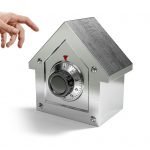Are you looking to invest in property? If so, a buy-to-let mortgage may be the right option for you. This article will explain the basics of buy-to-let mortgages, how they work, and who is eligible for them.
By the end of this article, you will better understand buy-to-let mortgages and whether or not they are right for you!
All About Mortgages
A mortgage is a loan used to purchase a property. Over time, you will be expected to repay the loan, plus interest. Mortgages are generally practical for anyone looking to finance a long-term investment, like a house.
The average term length is 10-30 years, meaning monthly payments will be lower the longer you take to pay off the loan. However, you will pay more monthly interest payments over the loan life if you choose a longer term.
You can lower your monthly payments by making a larger down payment on the property. The down payment is typically 20% of the home’s purchase price.
But it can vary depending on the type of mortgage you get. There are two types of mortgages: fixed-rate and adjustable-rate. A fixed-rate mortgage’s interest rate is secure and will not change with market conditions.
With an adjustable-rate mortgage, your interest rate will change over time, usually under changes in an index such as the prime rate. Adjustable-rate mortgages typically have lower interest rates than fixed-rate mortgages, but they can be riskier because your payments could go up if interest rates rise.
Choosing the right mortgage loan is essential before beginning the process. Understanding your options will help ensure you make the best decision for your financial future.
Most mortgages are for residential properties—meaning they are intended for people who want to live in the property. Hence, a buy-to-let mortgage is a great option to get into the rental property market.
What Are Buy-to-Let Mortgages?
Buy-to-let mortgages are loans for people intending to buy a property solely to rent it out. BTL Mortgages allow you to borrow money from a lender to buy a property, which you will then rent out to tenants, offering both capital and interest mortgages and interest-only mortgage options for buy-to-let customers.
The term “buy-to-let” can apply to both residential and commercial properties. A buy-to-let mortgage can be a fantastic opportunity to generate money and build wealth if you have the right property and tenants. When you have to pay customers living in your investment, their rent will go directly towards repaying the loan plus interest.
The Purpose Of Buy-to-Let Mortgages
The primary purpose of a buy-to-let mortgage is to provide the borrower with the funds necessary to purchase an investment property. To qualify for a buy-to-let mortgage, the borrower must have a good credit history and sufficient income to cover the mortgage payments.
The interest rate on a buy-to-let mortgage is typically higher than that on standard mortgage repayments due to the higher risk involved. However, with the right property and tenants, a buy-to-let mortgage can be a lucrative investment.

What Are the Benefits of Buy-to-Let Mortgages?
Most people are familiar with the traditional mortgage, where the borrower purchases a property and pays back the loan over a period of years. However, there is another type of mortgage known as a buy-to-let mortgage.
As the name suggests, A mortgage is created for people interested in buying a property to rent it out. There are several benefits of buy-to-let mortgages, including the following:
You can generate rental income:
One of the most significant advantages of buy-to-let mortgages is that they provide a way to generate income from rental properties. As a result, it can be a desirable option for people looking for a source of passive income.
You can take advantage of tax breaks:
Another benefit of buy-to-let mortgages is that they offer several tax breaks. For example, you can deduct the interest-only basis payments on your mortgage from your taxable income.
It can result in significant savings come tax time.
You can build equity:
As your tenants make their monthly rental payments, you will slowly but surely build up equity in the property. And, if you eventually decide to sell the property, you can keep any profits you have generated.
The Amount You Can Borrow With A Buy-To-Let Mortgage
The amount you can borrow with a buy-to-let mortgage depends on the lender and your circumstances. Generally speaking, lenders will look at your income, assets, and liabilities to determine how much money they will give you.
Lenders typically want the property’s rental income to exceed the monthly mortgage payments when deciding how much to loan. Therefore, it ensures that you can keep up with your loan monthly repayments even if the rental income dips at any point.
The rules around how much you can borrow with a buy-to-let mortgage differ from those for a standard residential mortgage, and the amount you’ll be able to borrow will depend on several factors. These include the type of property you’re looking to purchase, your financial situation, and how much rental income you’re likely to receive.
Generally, you’ll need to deposit at least 25% of the property’s value to qualify for a buy-to-let mortgage. The maximum loan-to-value (LTV) ratio for most buy-to-let mortgages is 85%, meaning you can borrow up to 85% of the property’s value.
However, some lenders may offer higher LTVs for experienced landlords or properties in specific locations. In addition, the interest rate on a buy-to-let mortgage is usually higher than that of standard residential mortgages.
It is because lenders view buy-to-let properties as riskier and therefore charge a higher interest rate to offset this risk. So before applying for a buy-to-let mortgage, it’s essential to consider all of these factors and ensure you’re aware of the risks involved.
With careful planning and research, however, a buy-to-let mortgage can be a great way to get started in the world of property investment.
Who Is Eligible For A Buy-To-Let Mortgage?
Specific eligibility requirements must be met to obtain a BTL mortgage. Generally, lenders will want to see that you have a good credit score and sufficient income.
The lender will also assess the property in question—it must be suitable for rental purposes. In addition, it usually must meet specific size, location, and condition standards.
Once your eligibility has been established and the property is deemed suitable, the lender will assess how much you can borrow. It is determined by factors such as your salary and minimum deposit amount.
Once a loan is approved, the mortgage proceeds are used to purchase the property (or repay any existing mortgage). The remaining funds are then used to cover other costs, such as stamp duty and legal fees.
The loan will be paid over a set period of time, usually 25 to 35 years. You will need to pay back the original loan amount and interest on that amount during this time. The interest rate can vary depending on the type of mortgage interest and the lender you choose.
Buy-to-let mortgages can be a great way to generate additional income and build equity. However, it’s essential to research and understand the risks involved before taking out a BTL mortgage.
With the right property, tenants, and lender, a buy-to-let mortgage deal can prove to be a lucrative investment.
Conclusion
Buy-to-let mortgages can be a great way to invest and generate additional income, but it’s essential to understand the risks involved and ensure you are eligible for one. With the right property and tenants, buy-to-let mortgages can provide a steady source of passive income.
By following these steps, you’ll be well on your way to becoming a successful landlord.
FAQs
How can I refinance my buy-to-let mortgage?
You may need to shop for the best rates and terms to refinance your buy-to-let mortgage. But first, consider all the associated costs, such as legal fees and stamp duty.
Do I need insurance for my buy-to-let property?
Yes, it is essential to have proper insurance for your buy-to-let property. It can help protect you from any unforeseen events or damages caused by tenants.
Make sure to research the different types of insurance available to make an informed decision.
What are the tax implications of a buy-to-let mortgage?
When taking out a buy-to-let mortgage, you should consider the tax implications. For example, landlords may be liable for income and capital gains taxes on their rental properties.
Be sure to speak with an accountant or tax adviser for more information about your situation.



